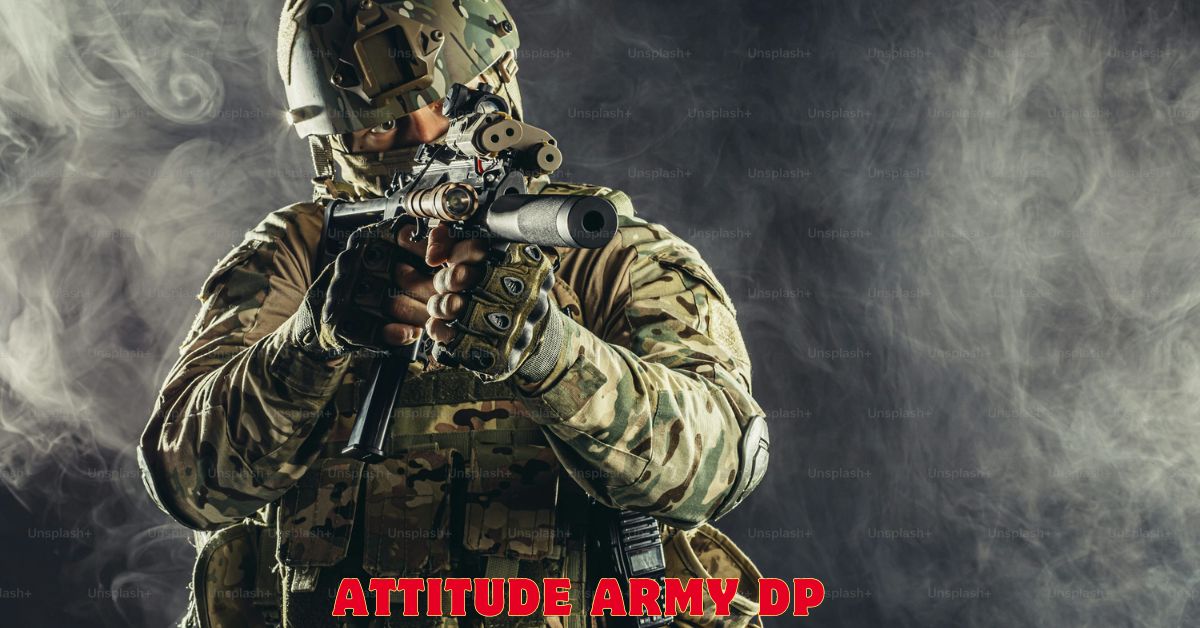In the contemporary digital age, social media platforms have become a significant part of daily life, influencing not only how individuals communicate but also how they express their identity. One prominent element of this expression is the use of profile pictures or display pictures (DPs). Among the various types of DPs, the attitude army DP has emerged as a notable trend. This essay explores the impact of attitude army DPs on digital culture, analyzing their significance, appeal, and implications.
Understanding Attitude Army DPs
The term “attitude army DP” refers to profile pictures that convey a strong sense of confidence, assertiveness, and often a rebellious attitude. These images typically feature individuals with a bold and unapologetic demeanor, sometimes accompanied by motivational quotes or statements. The concept of an attitude army DP is not merely about showcasing a stylish or fierce appearance; it reflects a broader cultural phenomenon where digital self-representation is intertwined with personal attitudes and social identity.
The Rise of Attitude Army DPs
The rise of attitude army DPs can be attributed to several factors. Firstly, social media platforms like Instagram, Facebook, and WhatsApp provide users with the freedom to curate their online persona. As a result, people increasingly use their DPs to communicate their personality and stance. The attitude army DP has gained popularity as it aligns with the desire to project strength and individuality in a crowded digital space.
Secondly, the attitude army DP trend is influenced by pop culture and media. Celebrities and influencers who exude confidence and charisma often serve as role models for their followers. As these public figures adopt similar DPs to signify their unique style or personal philosophy, their audience tends to emulate this trend. The widespread visibility of such profiles amplifies the appeal of attitude army DPs.
Psychological Appeal of Attitude Army DPs
The psychological appeal of attitude army DPs lies in their ability to project confidence and assertiveness. For many individuals, using an attitude army DP is a way to reinforce their self-image and communicate their values. This form of digital self-expression can enhance one’s sense of empowerment and control, particularly in an environment where online interactions can significantly impact self-esteem.
Furthermore, attitude army DPs often include elements of rebellion or defiance. This rebellious aspect resonates with individuals who identify with nonconformist attitudes or who wish to challenge societal norms. By choosing a DP that reflects these traits, users can align themselves with a broader subculture or community that shares similar values.
Attitude Army DPs and Social Identity
Attitude army DPs play a crucial role in shaping and expressing social identity. In a digital landscape where personal and public identities often overlap, the choice of a profile picture can convey a wealth of information about an individual’s personality and values. An attitude army DP serves as a visual statement, signaling to others that the user is confident, assertive, and unafraid to stand out.
This form of self-expression extends beyond mere aesthetics; it is deeply connected to how individuals want to be perceived by their peers. By selecting an attitude army DP, users align themselves with a particular social group or movement, reinforcing their connection to certain attitudes or beliefs. This alignment can foster a sense of belonging and community among users who share similar digital personas.
Impact on Digital Interactions
The use of attitude army DPs can influence digital interactions in various ways. For instance, individuals with such profile pictures may be perceived as more assertive or influential, potentially affecting how others engage with them. This perception can impact online communication dynamics, such as the level of respect or authority attributed to the user.
Moreover, the prevalence of attitude army DPs can contribute to the formation of digital subcultures. As more individuals adopt similar profile pictures, a collective identity emerges within social media platforms. This phenomenon can lead to the creation of niche communities centered around shared values or attitudes, further solidifying the role of attitude army DPs in digital culture.
Criticisms and Controversies
Despite their popularity, attitude army DPs are not without criticism. Some argue that this trend promotes a superficial form of self-expression, where the emphasis on appearance and attitude overshadows more meaningful forms of communication. Critics also contend that the focus on projecting a confident or rebellious image may contribute to a culture of unrealistic expectations and pressures.
Additionally, the adoption of attitude army DPs can sometimes lead to misunderstandings or conflicts. For example, a DP that is intended to convey confidence might be interpreted as arrogance by others. This potential for misinterpretation highlights the complexity of digital self-representation and the challenges associated with conveying nuanced attitudes through visual means.
The Future of Attitude Army DPs
As digital culture continues to evolve, the role of attitude army DPs may undergo significant changes. Advances in technology and shifts in social media trends could influence how individuals choose to represent themselves online. For instance, emerging platforms or new forms of digital communication might introduce alternative ways of expressing confidence and assertiveness.
Additionally, the increasing awareness of digital well-being and mental health could impact the prevalence of attitude army DPs. Users may become more mindful of how their online persona affects their self-esteem and interactions with others. This awareness could lead to a broader exploration of self-expression beyond the confines of traditional profile pictures.
Conclusion
The attitude army DP represents a fascinating intersection of digital culture personal identity and social interaction. As a visual tool for conveying confidence and assertiveness, it has become a prominent feature of online self-representation. While it reflects broader trends in digital self-expression and social identity, the attitude army DP also raises important questions about the nature of online communication and the pressures of digital personas. As social media continues to shape how we present ourselves, the evolution of attitude army DPs will undoubtedly reflect broader shifts in digital culture and self-expression.
Read more: Healthy Life Wellhealthorganic Tips for Optimal Wellbeing


